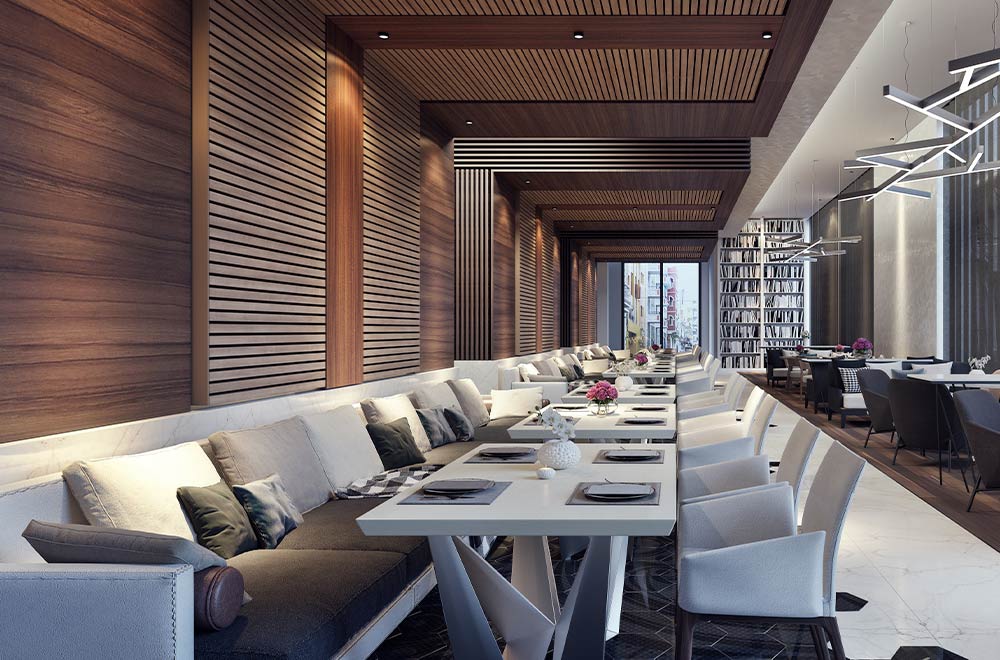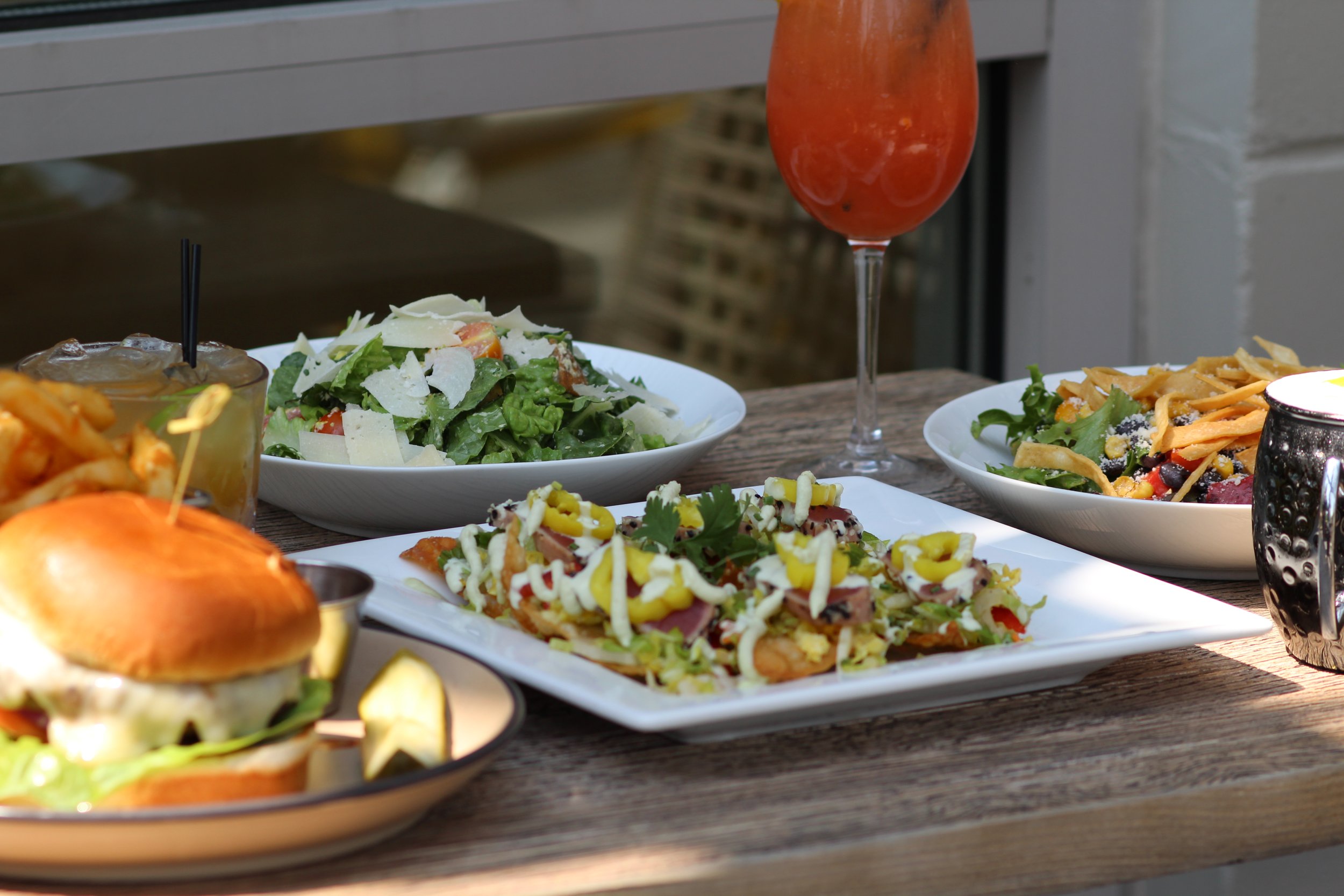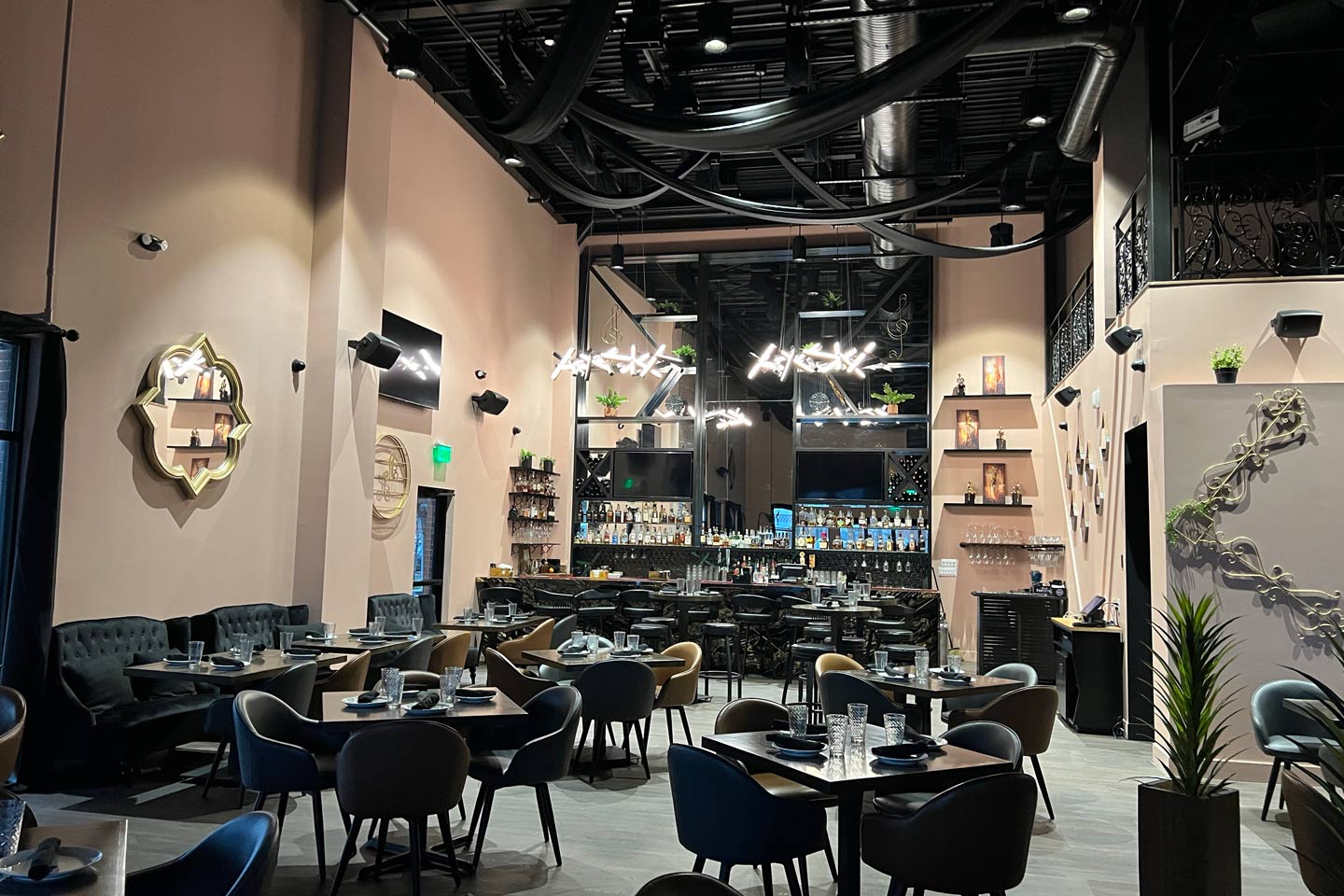Fine Dining Experience Islamabad: Delight In Lavish Cooking Pleasures
Wiki Article
Savor Authentic Oriental Cuisine With a Pan-Asian Twist for a Cooking Experience
Getting started on a culinary journey with genuine Asian cuisine, boosted with a Pan-Asian twist, offers an unique chance to check out the rich tapestry of tastes that define the region's varied cooking traditions. As you ponder these tempting dishes, consider the social stories and historic impacts that form them, each bite offering a tale waiting to be discovered. Romantic restaurants Islamabad.
Exploring Pan-Asian Flavors
In the world of international gastronomy, Pan-Asian cuisine attracts attention for its amazing diversity and the unified interaction of flavors from numerous Asian cultures. This culinary strategy commemorates the abundant customs and unique active ingredients located across the continent, creating a tapestry of tastes that is both interesting and gratifying. Key to Pan-Asian cuisine is its capacity to balance different flavors-- sweet, salted, spicy, and sour-- while highlighting the freshness and quality of each active ingredient.From the umami-rich soy sauce of Japan to the intense chili peppers of Thailand, Pan-Asian food uses an extensive palette of flavors. These aspects are frequently integrated in inventive methods, boosting dishes with layers of complexity. As an example, using great smelling herbs such as lemongrass and cilantro, usual in Vietnamese and Thai food, adds a refreshing illumination to meals, while the unification of coconut milk supplies a creamy, rich appearance.
The focus on fresh produce and fragrant flavors makes sure that each dish is not only a feast for the preference buds yet also for the detects. Pan-Asian food invites restaurants to start a culinary journey, discovering the huge and differed landscapes of Eastern gastronomy with every bite.
Combination Dishes to Attempt
While Pan-Asian cuisine is celebrated for its standard flavors, the contemporary cooking landscape is significantly welcoming combination meals that mix these traditional components with influences from other regions. This ingenious strategy not just honors the rich heritage of Eastern cooking arts yet also presents novel taste experiences that attract modern tastes buds.
An archetype of such a fusion recipe is the Korean-Mexican taco, where seasoned bulgogi beef is wrapped in a warm tortilla, topped with kimchi and a hot gochujang-infused salsa. This mix weds the bold, tasty tastes of Korea with the lively, fresh components of Mexican food. Likewise, sushi burritos have actually acquired appeal, amalgamating the delicate creativity of Japanese sushi with the passionate, hand-held convenience of a burrito, commonly including blend components like tempura shrimp and avocado with a drizzle of wasabi mayo.
Another noteworthy meal is Thai curry ramen, which infuses the velvety, fragrant spices of Thai curry into the comforting broth of standard Japanese ramen, producing an unified blend that tantalizes the senses. These fusion meals expand beyond simple novelty; they represent a culinary discussion in between societies, motivating exploration and innovation on the planet of Pan-Asian cuisine.
Necessary Ingredients and Spices
To really value Pan-Asian cuisine, one have to recognize the necessary active ingredients and spices that form its structure. This varied cooking design attracts from a rich tapestry of Asian traditions, using an unified mix of tastes and structures.Fragrant elements are critical, with garlic, ginger, and lemongrass being ubiquitous throughout various Pan-Asian recipes. These active ingredients supply an aromatic base that boosts the intricacy of flavors. Seasonings such as celebrity anise, cardamom, and cinnamon introduce warmth and personality, resembling impacts from areas like China and India.

Cooking Strategies and Tips
Understanding the art of Pan-Asian cuisine needs knowledge with its distinctive cooking methods, each adding to the lively tapestry of flavors this cooking tradition is celebrated for. Central to these methods is the stir-fry, a quick cooking strategy that maintains the dietary stability and vivid shades of active ingredients. Utilizing a frying pan, the stir-fry approach enables even warmth distribution, crucial for achieving the particular appearance and flavor equilibrium of Pan-Asian recipes.Another essential technique is steaming, especially widespread in Chinese food. This gentle approach preserves the natural flavors and jade garden nutrients of active ingredients, making it ideal for fish and shellfish and vegetables. Dumplings, a beloved staple, frequently profit from steaming, causing soft, succulent textures.
Grilling, likewise important, imparts great smoky depths to dishes such as Korean bulgogi or Japanese yakitori (pan asian restaurant Islamabad). This method often involves marinating active ingredients, enabling flavors to permeate deeply prior to food preparation over an open fire or warmer
Last but not least, understanding the art of stabilizing tastes-- sweet, sour, salted, bitter, and umami-- is essential. Appropriately layering these elements can raise a recipe from regular to remarkable, providing a facility and satisfying cooking experience that embodies the essence of Pan-Asian food.
Dining Experiences Worldwide
Around the world, Pan-Asian cuisine supplies an unmatched dining experience, celebrated for its abundant tapestry of flavors and vivid presentations. This culinary sensation has transcended social boundaries, catching the hearts and tastes of food lovers worldwide. In cosmopolitan cities fresh York, London, and Sydney, Pan-Asian dining establishments offer as melting pots where culinary practices from Thailand, Japan, China, and past assemble, supplying restaurants with a diverse mix of recipes that highlight the area's variety.The global charm of Pan-Asian cuisine exists in its ability to offer both authenticity and technology. Chefs skillfully wed standard ingredients such as lemongrass, soy sauce, and miso with contemporary methods, leading to recipes that are both acquainted and refreshingly new. This fusion allows diners to start a culinary trip that appreciates heritage while welcoming modernity.
Moreover, dining experiences are raised through attentively made environments that show the values of Pan-Asian aesthetics. From minimalist Japanese-inspired interiors to dynamic Thai-themed spaces, each description dining establishment uses a special ambiance that complements the culinary offerings. As an outcome, customers are not merely consuming a dish yet partaking in a cultural experience, making Pan-Asian eating a really global sensation.
Conclusion
The exploration of Pan-Asian food uses a profound understanding of the intricate interaction of flavors and culinary customs throughout Asia. By welcoming combination dishes such as Thai curry ramen and sushi burritos, the cooking journey not just highlights the adaptability of conventional active ingredients but also showcases ingenious modern-day strategies. This gastronomic experience, enriched by cooking methods and important seasonings, provides an one-of-a-kind chance to value the multiculturalism and cooking artistry that specify Pan-Asian food on an international range.Embarking on a culinary trip via authentic Asian food, improved with a Pan-Asian twist, uses a distinct chance to check out the abundant tapestry of tastes that specify the area's varied cooking customs.In the realm of this content global gastronomy, Pan-Asian cuisine stands out for its amazing diversity and the unified interaction of tastes from numerous Oriental societies. Key to Pan-Asian cuisine is its capacity to stabilize different flavors-- sweet, salted, spicy, and sour-- while highlighting the freshness and quality of each component.

Report this wiki page